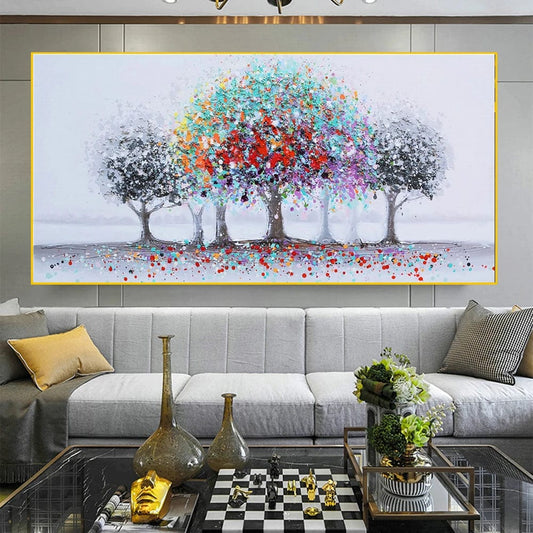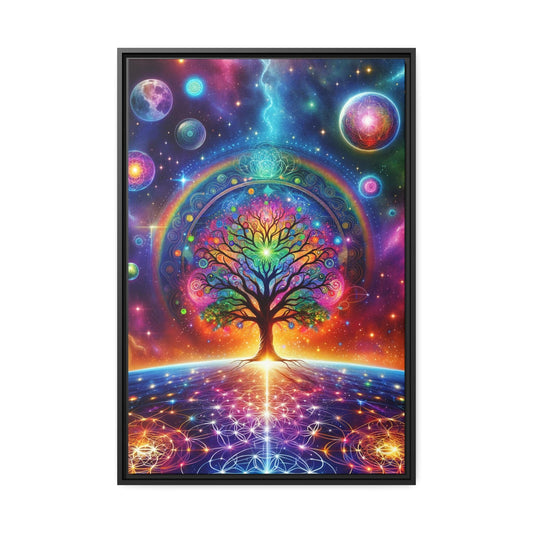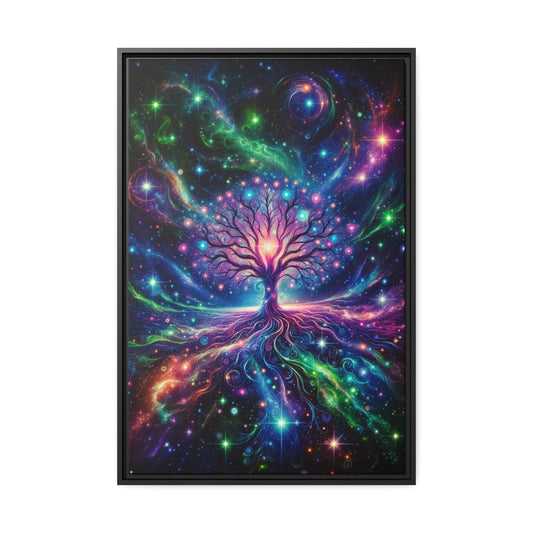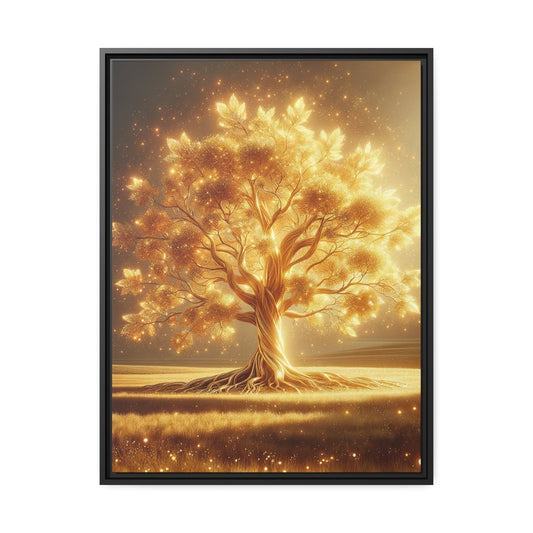-
Affiche Arbre De Vie Symphonie de Feuilles
Regular price From €34,47 EURRegular price€0,00 EURSale price From €34,47 EUR -
Affiche Arbre De Vie Vie Intemporelle
Regular price From €34,47 EURRegular price€0,00 EURSale price From €34,47 EUR -
Affiche Arbre De Vie Racines Cosmiques
Regular price From €34,47 EURRegular price€0,00 EURSale price From €34,47 EUR -
Affiche Arbre De Vie Murmures de la Forêt
Regular price From €34,47 EURRegular price€0,00 EURSale price From €34,47 EUR -
Affiche Arbre De Vie Branches du Destin
Regular price From €34,47 EURRegular price€0,00 EURSale price From €34,47 EUR -
Affiche Arbre De Vie L'Arbre des Rêves
Regular price From €34,47 EURRegular price€0,00 EURSale price From €34,47 EUR -

 Sold out
Sold outAffiche Arbre De Vie Or
Regular price From €21,72 EURRegular price€0,00 EURSale price From €21,72 EURSold out -
Tableau Arbre De Vie Énergie Éthérée
Regular price From €147,08 EURRegular price -
Tableau Arbre De Vie Nuance D'or
Regular price From €147,08 EURRegular price -
Tableau Arbre De Vie Branches D'Or
Regular price From €147,08 EURRegular price -
Tableau Arbre De Vie Et Les Galaxies
Regular price From €147,08 EURRegular price -
Tableau Arbre De Vie À La Lumière Du Soleil
Regular price From €147,08 EURRegular price -
Tableau Arbre De Vie Croissance Et Abondance
Regular price From €147,08 EURRegular price -
Tableau Arbre De Vie L'Energie Du Cosmos
Regular price From €147,08 EURRegular price -
Tableau Arbre De Vie Les Feuilles D'or Bruissent Dans Le Vent
Regular price From €147,08 EURRegular price -
Tableau Arbre De Vie Vers Les Etoiles
Regular price From €147,08 EURRegular price
Collection: Tree of Life Painting
In the vast world of interior design, the Tree of Life stands out as a timeless centerpiece, blending deep symbolism and captivating aesthetics. This artistic element, inspired by nature itself, has become an essential trend in decoration. Let's discover together how the Tree of Life can bring a touch of beauty and meaning to your interior space.
Symbolism of the Tree of Life:
The Tree of Life is much more than just an artistic representation; it carries within it a deep symbolism that transcends cultures and eras. Let's explore the various meanings associated with this universal emblem.
-
Growth and Renewal: The Tree of Life embodies growth and renewal, symbolizing the eternal cycle of life. Its branches extend toward the sky, representing the aspiration for spirituality and knowledge, while its roots anchor deep into the earth, symbolizing stability and connection to nature.
-
Interconnection of Life: This symbolic tree evokes the interconnection of all life on Earth. The numerous branches and leaves represent the diversity of living things, emphasizing the fundamental unity of all existence. It is a powerful reminder of our interdependence and the need to respect and preserve nature.
-
Universal Spirituality: Present in many spiritual traditions around the world, the Tree of Life transcends cultural boundaries. It is often associated with concepts such as Axis Mundi, representing the connection between the earthly world and the divine. In this, the Tree of Life becomes a spiritual icon, inviting reflection and connection with higher forces.
-
Symbol of Strength and Resilience: The Tree of Life is often linked to strength and resilience. Despite bad weather and changing seasons, the tree remains standing, symbolizing the ability to overcome life's challenges. It is a powerful reminder of the perseverance and inner strength needed to get through trials.
-
Balance and Harmony: The branches, leaves and roots of the Tree of Life intertwine in a visual symphony, evoking balance and harmony. It encourages us to seek balance between the different facets of life, whether between work and relaxation, or between spirituality and daily reality.
Spirituality and personal growth:
The Tree of Life, beyond its seductive aesthetics, becomes a powerful metaphor for spirituality and personal growth. By exploring the symbolism of this sacred tree, we can discover profound lessons that can illuminate our spiritual path and nourish our personal development.
-
Deep Roots of Spirituality: The roots of the Tree of Life, reaching deep into the earth, symbolize connection to solid spiritual foundations. Likewise, our spiritual growth is enhanced by our ability to ground ourselves in deep values, regular meditation and exploration of our inner essence. By developing this spiritual connection, we find the strength to weather the storms of life.
-
Elevation towards Knowledge and Wisdom: The branches of the Tree of Life, stretching towards the sky, evoke the aspiration for knowledge and wisdom. In the same way, our personal growth is fueled by our constant quest for understanding, self-discovery and expansion of our consciousness. It is a call to elevate our minds beyond material concerns and embrace spiritual wisdom.
-
Cycles of Transformation: The Tree of Life, with its changing seasons, symbolizes the cycles of life and transformation. In the same way, our spiritual journey is marked by phases of growth, reflection, change and renewal. Understanding and accepting these cycles promotes balanced personal growth and constant transformation towards an improved version of ourselves.
-
Universal Interconnection: The many branches and leaves of the Tree of Life reflect the interconnectedness of all life. In our personal growth, recognizing and celebrating our interconnectedness with others and the universe creates a sense of community and compassion. It is through these connections that we can experience significant spiritual growth.
-
Fruit of Spiritual Realization: The fruits often depicted on the Tree of Life can symbolize the rewards of spiritual realization. As we pursue our personal and spiritual growth, we reap the rewards of inner peace, joy, love and deep understanding of our existence.
Varied Materials and Styles:
The Tree of Life, as a versatile artistic element, is expressed through an impressive range of materials and styles, providing endless diversity to suit different tastes and decors. Explore the multiple facets of the Tree of Life based on its materiality and aesthetics.
-
Metal: Metal sculptures of Trees of Life are among the most popular. Often made of iron, steel or aluminum, these works of art offer a rugged elegance. The play of light and shadow on metal surfaces adds a captivating visual dimension, while the durability of the material makes them ideal for indoor or outdoor decoration.
-
Wood: Wooden representations of Trees of Life bring organic warmth to any space. Wood carvings can range from traditional to contemporary, and the natural grain of the wood adds a unique texture. This is an ideal option for those looking for a natural, handcrafted aesthetic.
-
Canvas and Paint: Contemporary artists explore the Tree of Life through vibrant canvases and paints. This artistic interpretation allows for an endless range of colors, styles and sizes. From abstract works to detailed depictions, painting offers rich artistic expression that can adapt to various interior atmospheres.
-
Glass: Glass sculptures offer a delicate and luminous interpretation of the Tree of Life. Thanks to the transparency of the material, light can play an important role, creating play of colors and subtle reflections. These glass works can be elegant centerpieces or bright accents in any room.
-
Textile: From tapestries to decorative fabrics, the Tree of Life finds its place in the world of textiles. Intricate designs can be woven or printed onto different fabrics, adding an artistic touch to curtains, cushions or even rugs. This approach brings softness and comfort to the overall aesthetic of the space.
-
Ceramics: The ceramic sculptures of Trees of Life add a tactile dimension to the artistic representation. Whether in the form of vases, statuettes or decorative tiles, ceramics offer a variety of creative possibilities, from clean, modern designs to pieces inspired by traditional crafts.
Focal Point Artistic Tree of Life:
The Tree of Life, through its symbolic beauty and artistic richness, stands out as a true focal point in interior decoration. Creating an artistic focal point with this element brings a captivating dimension to the space, drawing attention and adding visual depth. Let's explore how to make the Tree of Life the artistic focal point in your home.
-
Strategic Positioning: Choose the location of your Tree of Life carefully to make it an effective focal point. Whether in the center of a wall, above a piece of furniture, or even as the centerpiece of a coffee table, the strategic position will enhance its visual impact and create harmony throughout the room.
-
Impressive Size: Opt for a Tree of Life size that catches the eye and dominates the space impressively. An imposing wall sculpture or large artistic canvas can instantly transform a room into a memorable artistic venue. Make sure the size matches the scale of the room for best effect.
-
Artistic Contrast: Play with contrast to highlight your Tree of Life. If the tree's tones are dark, place it on a light-colored wall to create a striking visual impact. Likewise, a bright Tree of Life will stand out beautifully against a dark background. The artistic contrast intensifies its aesthetic appeal.
-
Appropriate Lighting: Use strategic lighting to highlight the details of the Tree of Life. Light spots directed towards the sculpture or subdued ambient lighting can create subtle effects of light, adding an artistic aura to the whole. Lighting can also emphasize the metallic or textured aspects of the work.
-
Creative Framing: If your Tree of Life is in painting or canvas form, consider creative framing. Choose a frame that complements the overall aesthetic of the piece while highlighting the work. Artistic framing can enhance the visual impact of the Tree of Life.
-
Color Coordinations: Integrate the colors of the Tree of Life into the rest of the room. This can be done through matching decorative accessories, cushions, rugs or furniture elements. This coordination creates visual unity, making the Tree of Life the heart of a harmonious whole.
Inspiration from Nature: The tree of life:
The Tree of Life, as a work of art, draws its very essence from nature. Exploring this deep inspiration, we discover how this decorative element can capture organic beauty and evoke an intimate connection with the natural world.
-
Organic Forms: The Tree of Life, with its sinuous branches and delicate leaves, borrows its forms from nature itself. By incorporating these organic elements, this artistic object evokes a feeling of natural movement, reminiscent of the fluidity and diversity found in natural ecosystems.
-
Natural Color Palette: The colors used in representations of the Tree of Life are often inspired by the tones of nature. From lush greens to earthy browns and sky blue hues, the natural color palette creates a calming and harmonious ambiance, reminiscent of the beauty of the outdoor landscapes.
-
Texture Evoking Touch: Artists strive to create textures that evoke the sensation of touching tree bark or leaves under the fingers. Whether it's a rough wooden sculpture, a textured painting, or a rich fiber tapestry, this attention to texture creates a sensory experience that evokes nature.
-
Cycles of Life: The Tree of Life symbolizes the cycles of life, a theme deeply rooted in nature. From the emergence of buds to the blooming of leaves and then falling in autumn, this artistic representation reflects the constant cycles of growth, decay and renewal observed in nature.
-
Associated Animals and Wildlife: Some Trees of Life incorporate elements of wildlife, such as birds, butterflies, or other creatures of nature. This adds an ecological dimension, highlighting the interconnectedness of all life forms in a harmonious ecosystem.
-
Integration of Natural Materials: The use of natural materials such as wood, stone or recycled glass strengthens the link between the Tree of Life and nature. These organic materials bring tangible authenticity, creating a work of art that feels truly rooted in the natural world.
-
Evocation of Specific Natural Elements: Some Trees of Life are specifically inspired by particular tree species, such as the oak, willow or baobab. This specificity creates a deeper connection with emblematic trees and reinforces the symbolism linked to these species.
Tree of life art and decoration:
The Tree of Life, as an artistic expression in the field of decoration, embodies the harmonious fusion between visual aesthetics and profound meaning. Let's dive into how the Tree of Life beautifully fits into the world of art and decor, adding a touch of symbolism and beauty to our interior spaces.
-
Timeless Work of Art: The Tree of Life transcends fleeting trends to become a timeless work of art. Whether in the form of elegant metal sculptures, vibrant paintings, or delicate tapestries, it offers timeless beauty that stands the test of time. This quality makes it an exceptional choice for those looking for long-lasting decoration.
-
Evocative Symbolism: Beyond its visual appeal, the Tree of Life brings symbolic depth to interior decoration. By representing growth, vitality and the connection between heaven and earth, it adds a spiritual dimension to the space. This symbolism can be particularly meaningful for those seeking to create a meaningful environment.
-
Adaptability in Styles: The Tree of Life adapts gracefully to a variety of decorating styles. Whether your interior is modern, traditional, bohemian or minimalist, there is a representation of the Tree of Life that fits harmoniously. The versatility of this artistic element makes it an ideal choice for all aesthetic tastes.
-
Artistic Focal Point: By placing the Tree of Life at the center of attention, it becomes an artistic focal point that instantly catches the eye. Whether above a fireplace, on a main wall or in the center of a room, it creates a lasting impression, transforming the space into a personal gallery.
-
Combination of Materials: The Tree of Life lends itself to a creative combination of materials. From intricately detailed metal sculptures to painted works on canvas to carved wood wall installations, the diversity of materials adds a tactile richness to the artistic experience.
-
Creation of Natural Ambience: The integration of the Tree of Life into the decoration creates a natural ambiance, bringing a hint of the outdoors inside. Floral designs, lush foliage and organic elements evoke the tranquility of nature, transforming your space into a sanctuary of serenity.
-
Artistic Customization: The Tree of Life also offers the possibility of artistic customization. Whether you choose specific colors, distinct shapes or personalized details, this decorative element can become a unique expression of your style and individuality.




























